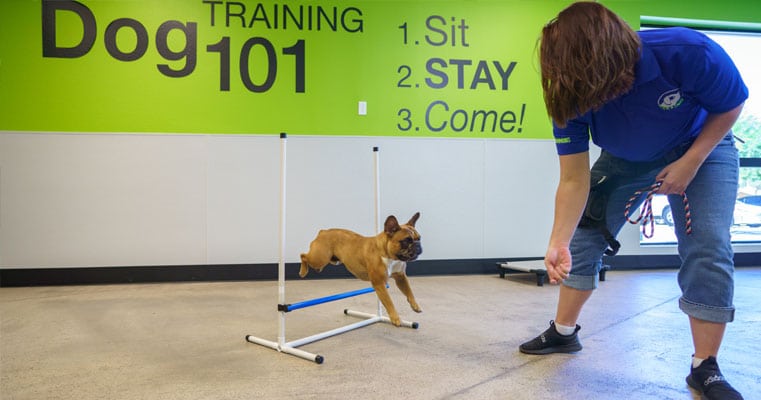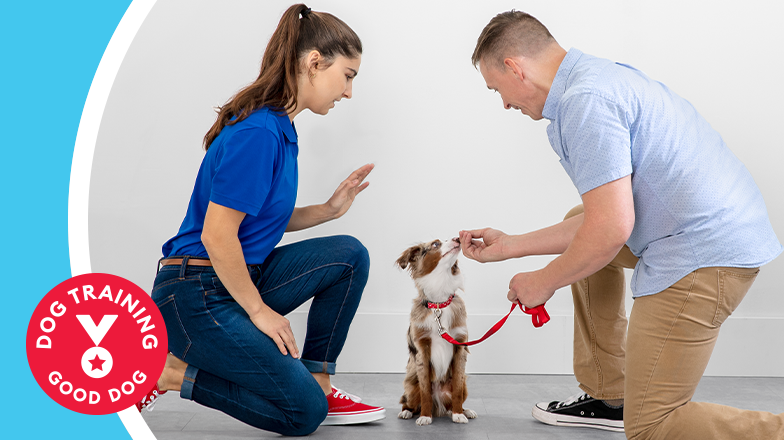Transform Your Dog's Habits With Proven Training Methods
Changing your pet dog's behavior needs a nuanced understanding of their private qualities and requirements, along with the application of proven training methods. By using favorable reinforcement and acknowledging essential signs in their body movement, you can successfully deal with usual behavior concerns such as excessive jumping or barking. Uniformity in your training approach not just enhances obedience however also fosters a much deeper bond of trust and regard in between you and your pet. Nevertheless, the path to successful makeover may offer unforeseen obstacles that warrant additional exploration.
Comprehending Pet Dog Actions
Recognizing pet dog actions is necessary for effective training and communication in between people and their canine friends. Canines, as social animals, display an array of behaviors influenced by genes, environment, and experiences - Dog training. Recognizing these behaviors helps proprietors tailor their training approaches to satisfy the details demands of their canines
Secret elements of dog behavior include body movement, vocalizations, and social interactions. As an example, a wagging tail commonly suggests exhilaration, while a lowered head might signal entry or concern. Recognizing these signals can help proprietors translate their dog's mood and react appropriately. In addition, socialization plays an essential function fit behavior; pet dogs that interact favorably with numerous individuals and various other animals are usually extra well-adjusted and adaptable.
Furthermore, identifying anxiety signals-- such as evasion, pacing, or panting actions-- can prevent escalation into extra severe problems. Owners who are attuned to their dog's habits can develop a secure and caring atmosphere, promoting trust fund and boosting the training process. Eventually, a deep understanding of canine habits lays the structure for a harmonious partnership and efficient training outcomes, ensuring both pets and their owners flourish together.
Positive Support Strategies
Favorable support techniques are widely recognized as one of one of the most reliable methods for training dogs, promoting a favorable knowing setting. This strategy involves fulfilling desired actions with deals with, appreciation, or play, thus encouraging the canine to repeat those behaviors. Unlike punitive techniques, favorable support constructs trust fund and strengthens the bond between the dog and the instructor.
Benefits should be given instantly complying with the wanted actions to assist the canine make the link. Uniformity is additionally necessary; using the very same commands and benefits assists the canine comprehend what is expected.
It is necessary to keep in mind that positive support is not regarding bribery; instead, it is about reinforcing great habits. In time, as the canine discovers to connect details activities with positive results, the regularity of benefits can be gradually minimized, transitioning to spoken praise or intermittent rewards. This approach not only urges obedience but additionally advertises a pleased and confident pet dog, making training a more pleasurable experience for both celebrations involved.
Dealing With Typical Problems
Attending to typical concerns during dog training is crucial for guaranteeing a harmonious and successful relationship between the pet dog and its proprietor. Numerous pet proprietors encounter behavior obstacles, such as excessive barking, leaping, and leash pulling. Recognizing the origin triggers of these actions is crucial for efficient training.
To mitigate this, provide ample physical workout, psychological stimulation, and opportunities for social interaction with both people and other pet dogs. Training the pet to sit upon greeting can redirect this actions positively.
Leash drawing is another common concern, regularly resulting from a canine's passion to discover. Making use of proper chain handling methods, integrated with training methods that urge loose-leash strolling, can considerably improve this habits.
On top of that, problems like source securing or Visit Website separation stress and anxiety call for customized approaches. Progressive desensitization and counter-conditioning can be efficient in addressing these difficulties. By acknowledging and proactively handling these usual issues, dog proprietors can promote an extra delightful training experience and strengthen the bond with their canine buddies.
Uniformity in Training

To achieve consistency, it is crucial that all participants of the household abide by the exact same training methods. As an example, making use of the same spoken cues and hand signals makes sure that the dog obtains uniform messages. In addition, the timing of incentives and modifications need to be regular; instant reinforcement increases the chance that the pet will connect the habits with the end result.
Regular technique sessions, combined with structured routines for feeding, walking, and play, assistance pets expect and recognize their environment, making them much more responsive to training. Inevitably, consistency fosters a sense of safety and depend on, encouraging dogs to find out a lot more successfully.
Structure a Solid Bond
Exactly how can cultivating a strong bond between a canine and its owner visit site enhance the training experience? A strong relationship constructed on trust and regard works as the structure for efficient training. When a canine really feels protected in its connection with its proprietor, it is most likely to display favorable habits and be responsive to learning. This bond encourages the pet to involve fully in training sessions, as it watches the owner as a source of assistance and support.
In addition, a solid bond facilitates far better communication. Canines are adept at reading human cues, and a relying on partnership permits more clear signals during training. Proprietors that spend time in structure this bond with play, socializing, and positive reinforcement produce an environment where pets feel eager and determined to learn.
In addition, a reputable link can decrease anxiety and behavior issues, as pet dogs are much less likely to act out when they really feel comprehended and looked after. Prioritizing the development of a solid bond not only enhances the training experience yet additionally contributes to a better and more well-adjusted pet. Eventually, the trip of training changes into a joint collaboration, bring about lasting behavioral enhancements.
Conclusion

Owners who are attuned to their pet's actions can produce a caring and safe atmosphere, promoting trust and boosting the training procedure. Inevitably, a deep understanding of canine habits Website lays the structure for a harmonious partnership and effective training results, making certain both pet dogs and their proprietors flourish with each other.
Addressing usual concerns throughout pet dog training is vital for ensuring a successful and harmonious connection in between the pet dog and its owner.Uniformity is a foundation of reliable canine training, as it develops a clear framework for the pet dog to comprehend expectations and habits.In conclusion, changing a dog's habits via confirmed training methods needs an understanding of canine behavior, the application of positive support strategies, and a focus on uniformity.